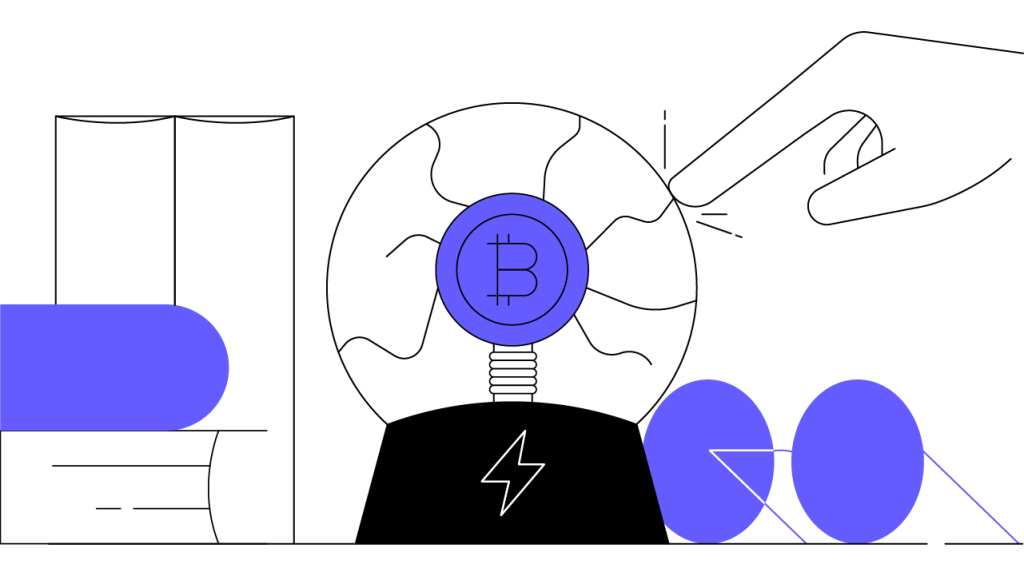Contents
Lightning Network: Next-Generation Bitcoin Architecture
The Lightning Network is an off-chain, second-layer solution to Bitcoin’s scalability and transaction speed problems that operates on top of the blockchain.

Summary
Blockchain networks excel at a number of functions, including decentralization, security, and irreversibility. However, it takes time for the decentralized network to reach consensus about new transactions and add them to the blockchain — which means transaction speeds can be sub-optimal. In order for blockchain technology to achieve widespread adoption in the real world, it needs to be both scalable and fast. The Bitcoin Lightning Network is a second-layer payment protocol that operates on top of a blockchain and represents one of the most promising solutions to the scalability and transaction speed problems facing the blockchain industry.
The Scalability Problem and Bitcoin
Bitcoin is the world’s leading cryptocurrency. However, as the first of its kind, it has some deficiencies. Bitcoin is relatively slow, generating a new block for the blockchain only once every 10 minutes, with a size limited to 1MB. Further, it handles only seven transactions per second. In order to reach mainstream adoption, that figure needs to be improved. To put things in perspective, Visa processes 24,000 transactions per second.
Around 2015, Bitcoin started to encounter what became known as its scalability problem, and a variety of different solutions were proposed. Some, for example, sought to increase the block size so as to increase the number of transactions that could be included on a single block. This approach famously resulted in the of 2017, which essentially divided the Bitcoin community and its underlying technology into two separate ecosystems.
SegWit and Second-Layer Solutions
Another solution was implemented in 2017 called (SegWit). It functions by removing signature data from Bitcoin transactions. A Bitcoin block contains transaction data and data about the origin and destination of BTC in any blockchain transaction, but SegWit segregates the witness (the digital signature) from the transaction data. Essentially, it rearranges the data in any given block more efficiently, allowing for double the Bitcoin block size (approximately 2MB per block). Although as of 2020, its adoption level was quite low (at only about 36% of the Bitcoin network). In addition to doubling the block size, SegWit crucially enables second-layer solutions to the scalability problem, such as the Lightning Network.
With second-layer building enabled, other solutions to the scalability problem seek to maintain the structure of the original Bitcoin protocol and focus on methods to boost scalability. Rather than alter the core functionality of Bitcoin’s blockchain, these types of solutions leave the original blockchain as it is and add a second layer on top to make improvements to its efficiency. One of the most promising solutions to Bitcoin’s scalability problem is the Lightning Network.
How the Bitcoin Lightning Network Functions
The Lightning Network is what’s known as an off-chain or second-layer solution to the scalability problem, and it works on top of the blockchain. It creates a private two-way channel between users, which enables multiple transactions to take place outside of the main blockchain without delegating the custody of funds. These transactions are then recorded in finality as one single transaction on the main blockchain. In theory, the Lightning Network could handle millions of transactions per second.
The Bitcoin Lightning Network is designed for small transactions that can be sent with miniscule fees. Part of its appeal is that small transactions, even micropayments, can be sent instantaneously for tiny fees, if any at all. Imagine that you and a friend alternate buying each other coffee every day for a week — rather than paying each other back after every instance, you might as well just square up at the end of the week. The two-way payments channel on the Lightning Network works similarly, and is secured by . If at any point one party closes the channel, the final balance is settled on the original blockchain layer. The Lightning Network also adds an additional layer of privacy to blockchain transactions, because micropayments between two users are not publicly broadcast to the entire network.
The use of the Lightning Network is optional, and individual Bitcoin network nodes can choose whether or not to participate in it. Larger transactions that require more security can still opt to take place on the original layer of the blockchain.
Future of the Bitcoin Lightning Network
Currently, there are three main teams working on the development of the Lightning Network: Blockstream, Lightning Labs, and ACINQ. In March of 2018, Lightning Labs CEO Elizabeth Stark released a Lightning Network daemon beta for developers. Since then, the Lightning Network has experienced ongoing development ahead of its eventual live release. Application specifications have also been released so that developers can begin building apps that work with the Lightning Network.
If the Bitcoin Lightning Network proves successful for solving Bitcoins’ scalability crisis, then, like Bitcoin itself, it may pave the way for other cryptocurrencies to follow suit in an effort to bolster their own throughput. And, If several cryptocurrencies adopt Lightning Network support, then there is even stronger potential for further development of interoperable blockchains.

Author
Is this article helpful?
